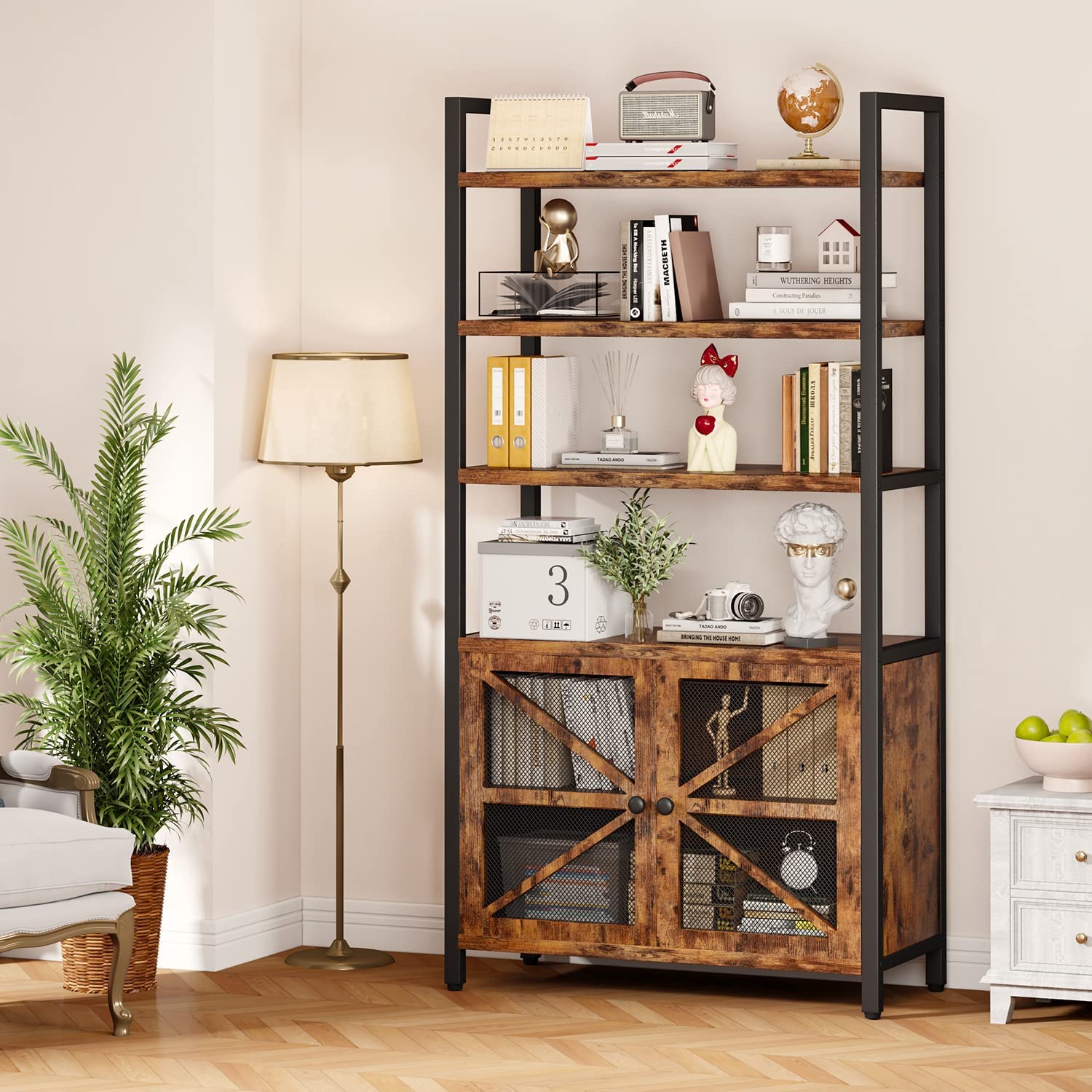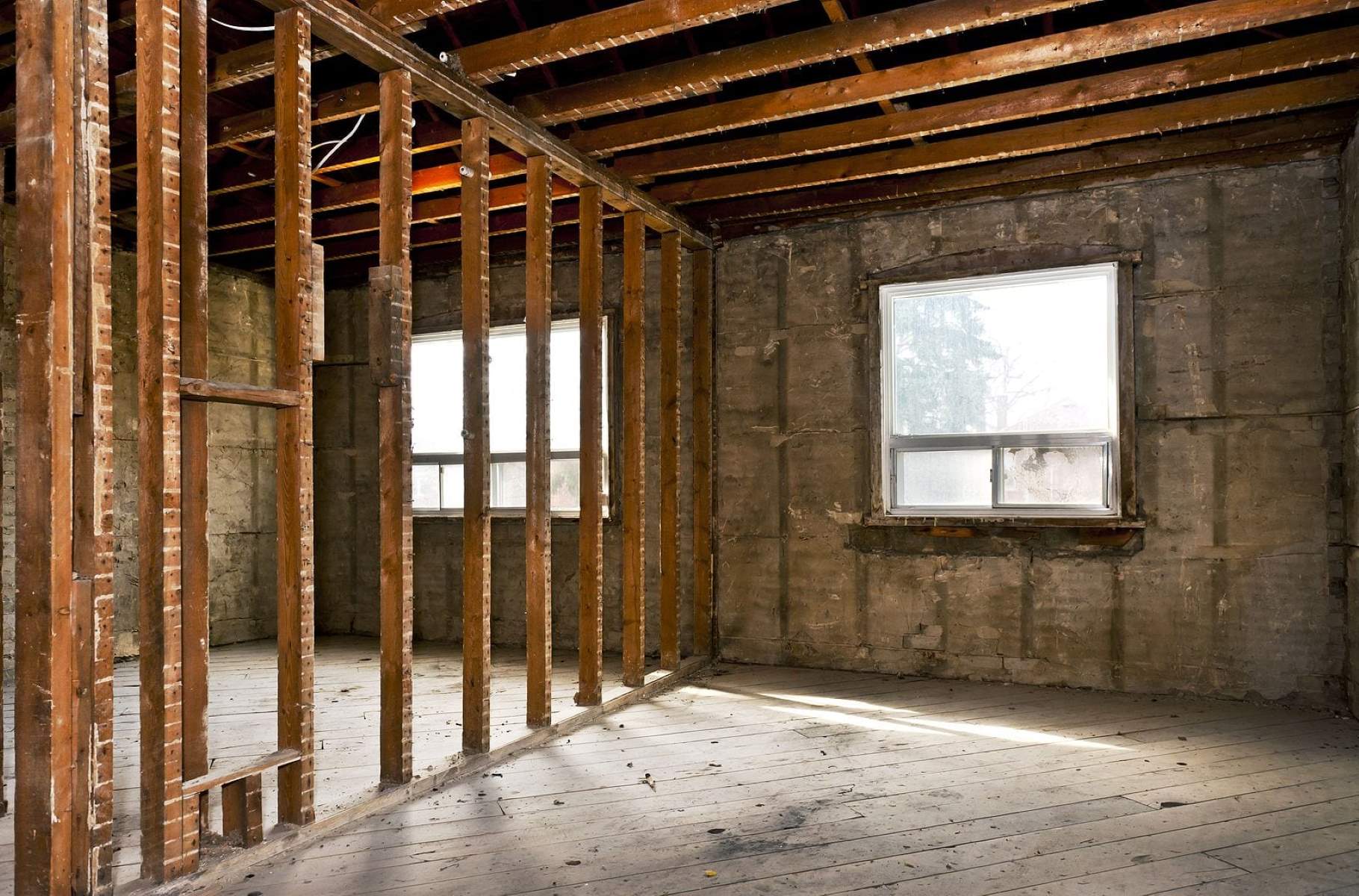Home>Interior Design>How Do I Keep My House From Getting Messy?


Interior Design
How Do I Keep My House From Getting Messy?
Modified: October 22, 2024
Discover effective tips for maintaining an organized home and preventing clutter with expert interior design techniques. Keep your house clean and tidy effortlessly!
(Many of the links in this article redirect to a specific reviewed product. Your purchase of these products through affiliate links helps to generate commission for Storables.com, at no extra cost. Learn more)
Introduction
Welcome to the world of interior design! Whether you’re a homeowner looking to spruce up your living space or a design enthusiast with a passion for creating beautiful interiors, you’ve come to the right place. In this article, we will delve into the exciting realm of interior design and explore how to transform your house into a stylish and functional haven.
Interior design is not just about aesthetics; it’s about creating a space that reflects your personality, suits your lifestyle, and promotes well-being. From choosing the right color palette to selecting furniture, lighting, and accessories, every decision you make contributes to the overall look and feel of your home.
So, how do you go about designing the perfect interior? Well, it all starts with a vision. Take some time to envision how you want your space to look and feel. Is it cozy and warm, modern and minimal, or colorful and eclectic? Having a clear vision in mind will help guide your design decisions and ensure a cohesive and harmonious outcome.
Next, it’s time to plan. Consider the layout and functionality of your space. Think about how you use each room and what activities take place there. This will help determine the furniture arrangement, storage needs, and traffic flow within the space.
When it comes to design elements, color is one of the most powerful tools. It can evoke emotions, create focal points, and set the tone for a room. Choose a color scheme that resonates with your style and the desired mood of each space. Consider factors like natural light, room size, and existing architectural features when selecting paint colors and fabrics.
In addition to color, texture plays a crucial role in interior design. Mixing different textures adds depth and visual interest to a room. Consider incorporating various materials such as wood, metal, glass, and textiles to create a multi-dimensional space.
Lighting is another essential aspect of interior design. It not only illuminates a room but also sets the ambiance. Utilize a combination of ambient, task, and accent lighting to create a balanced and inviting atmosphere. Natural light is also invaluable, so maximize it by choosing window treatments that allow in as much light as possible.
Finally, don’t forget about the finishing touches. Accessories and artwork can bring personality and character to a space. Whether it’s a statement piece, family photos, or a curated collection, these personal touches add the final layer to your interior design.
With a little creativity, inspiration, and attention to detail, you can transform your house into a beautiful and functional home. So, let’s embark on this interior design journey together. Strap on your creative hat and get ready to create spaces that truly reflect your unique style and make you feel right at home.
Key Takeaways:
- Establish a cleaning routine and involve the whole household to maintain a tidy and organized home, reducing stress and promoting a sense of well-being.
- Incorporate daily maintenance tasks and seek professional help when needed to ensure a consistently clean, organized, and inviting living space.
Read more: How Do I Get The Floor Plan For My House
Establish a Cleaning Routine
Keeping your house tidy and organized starts with establishing a cleaning routine. By incorporating regular cleaning tasks into your schedule, you can maintain a clean and clutter-free living environment. Here are some tips to help you establish an effective cleaning routine:
- Create a schedule: Dedicate specific days or times for different cleaning tasks. For example, you might designate Mondays for dusting and vacuuming, Tuesdays for bathroom cleaning, and so on. Having a schedule will help you stay on track and ensure that all areas of your home are regularly cleaned.
- Break it down: Instead of overwhelming yourself with a marathon cleaning session, divide your cleaning tasks into smaller, more manageable chunks. Tackle one room or one task at a time to make it feel less daunting.
- Delegate tasks: If you live with family members or roommates, involve them in the cleaning process. Assign specific tasks to each person so that the workload is shared. Not only does this lighten your own load, but it also promotes a sense of shared responsibility.
- Set a timer: Sometimes, it’s easy to get carried away with cleaning and spend more time than necessary on a task. Set a timer for each cleaning task to help you stay focused and make the most efficient use of your time.
- Prioritize problem areas: Identify the areas in your home that tend to get messier quickly or require more attention. These may include high-traffic areas, kitchens, or children’s playrooms. Prioritize cleaning these areas more frequently to maintain cleanliness throughout the house.
- Keep cleaning supplies handy: Make sure you have all the necessary cleaning supplies readily accessible. Store them in a portable caddy or designated cleaning area so that you can quickly grab what you need when it’s time to clean.
- Make it a habit: Consistency is key when establishing a cleaning routine. Make cleaning a habit by incorporating it into your daily or weekly schedule. Over time, it will become second nature, and your house will stay cleaner for longer.
By following these tips and creating a cleaning routine that works for you, you can maintain a clean and organized home. Not only does this contribute to a more pleasant living environment, but it also reduces stress and promotes a sense of well-being.
Declutter and Organize Regularly
A cluttered and disorganized living space can create a sense of chaos and make it difficult to relax and enjoy your home. That’s why it’s important to declutter and organize regularly. Here are some strategies to help you get started:
- Start small: Take it one room or area at a time. Trying to tackle the entire house at once can be overwhelming. Begin with a small, manageable space, like a closet or a kitchen drawer, and gradually work your way through the rest of your home.
- Sort and categorize: As you go through your belongings, sort them into categories. Create piles for items you want to keep, donate, sell, or discard. This will help you make decisions more efficiently and determine what items are truly essential to you.
- Be ruthless: When decluttering, it’s important to be honest with yourself and let go of things you no longer need or use. Ask yourself if an item brings you joy, serves a practical purpose, or holds sentimental value. If not, it might be time to part ways with it.
- Create designated storage: Having a designated place for each item in your home is key to maintaining organization. Invest in storage solutions like bins, baskets, and shelves to keep everything in its rightful place. Labeling containers can also help you locate items quickly and easily.
- Adopt a one-in, one-out policy: To prevent clutter from piling up again, make a rule that for every new item you bring into your home, you must remove an old one. This helps ensure that your space doesn’t become overrun with unnecessary belongings.
- Regularly reassess and reorganize: As time goes on, your needs and preferences may change. Make it a habit to regularly reassess your belongings and reorganize as necessary. This will help you maintain a clutter-free environment and keep things running smoothly.
- Get creative with storage solutions: Look for creative storage solutions that can maximize space and keep your belongings organized. Utilize vertical space with wall-mounted shelves, use closet organizers to optimize storage capacity, and invest in furniture with built-in storage compartments.
- Make it a family effort: Decluttering and organizing shouldn’t be the sole responsibility of one person. Involve your family members or roommates in the process. Teach them the importance of keeping a tidy space and assign age-appropriate tasks to everyone.
- Celebrate progress: Don’t forget to acknowledge and celebrate your decluttering achievements. Whether it’s treating yourself to something you’ve been wanting or simply taking a moment to appreciate the calm and orderly environment you’ve created, celebrating your progress can be motivating.
By incorporating regular decluttering and organizing sessions into your routine, you can create a more serene and functional living space. A clutter-free home not only looks more visually appealing but also brings a sense of peace and clarity to your daily life.
Develop Good Habits
Developing good habits is crucial for maintaining a clean and organized home in the long run. By consistently practicing these habits, you can prevent clutter from accumulating and ensure that your living space stays tidy. Here are some good habits to develop:
- Put things away immediately: Instead of leaving items lying around, make a habit of putting them away as soon as you’re done using them. This applies to everything from clothes and accessories to kitchen utensils and personal belongings.
- Do a quick tidy-up each day: Set aside a few minutes each day to do a quick tidying session. Put items back in their designated places, straighten cushions, and wipe down surfaces. This small daily effort will prevent clutter from building up and make cleaning more manageable.
- Create an entryway organization system: Establish a designated space near the front door for keys, wallets, and other frequently used items. This will help you avoid the frustration of searching for them when you’re rushing out of the house and keep your entryway clutter-free.
- Make your bed every morning: Making your bed each morning sets a positive tone for the day and instantly makes your bedroom look neater. It takes just a few minutes but has a significant impact on the overall appearance of your space.
- Do laundry regularly: Keeping up with laundry prevents clothes from piling up and reduces clutter in your living spaces. Set a specific day or days each week to do laundry and make it a priority to put away clean clothes promptly.
- Create a system for managing paperwork: Paper clutter can quickly accumulate and make your home feel disorganized. Establish a system for managing paperwork, including bills, mail, and important documents. Use folders, organizers, or digital storage solutions to keep everything in order.
- Wipe down surfaces after use: Develop the habit of wiping down kitchen counters, bathroom sinks, and other surfaces after use. This prevents grime and dirt from building up and makes deep cleaning tasks less frequent and time-consuming.
- Practice mindful shopping: Before making a purchase, ask yourself if you truly need the item and if it will add value to your life. Avoid impulse buying and focus on acquiring items that align with your style and serve a purpose in your home. This helps prevent unnecessary clutter.
- Take care of maintenance tasks promptly: Addressing small maintenance tasks, such as fixing a leaky faucet or replacing a burnt-out lightbulb, as soon as they arise helps maintain a well-functioning home. Ignoring these tasks can lead to bigger issues down the road.
- Teach children about tidiness: If you have children, involve them in maintaining a tidy home. Teach them age-appropriate tasks, such as making their beds, putting away toys, and picking up after themselves. Encouraging good habits from a young age instills a sense of responsibility and helps keep your home in order.
By incorporating these good habits into your daily routine, you can create a home environment that is organized, efficient, and conducive to well-being. Consistency and discipline are key to making these habits stick, but the long-term benefits are well worth the effort.
Use Storage Solutions
Effective storage solutions are essential for maintaining a clutter-free and well-organized home. When everything has a designated place, it becomes easier to keep your living spaces clean and tidy. Here are some storage solutions to consider:
- Utilize vertical space: Make the most of your vertical space by installing wall-mounted shelves or using tall bookcases. This allows you to store items off the floor and frees up valuable floor space.
- Invest in storage furniture: Look for furniture pieces that double as storage solutions. For example, ottomans with hidden storage compartments or coffee tables with built-in drawers can be a great way to hide away items while also serving a functional purpose.
- Maximize closet space: Closets can easily become cluttered if not properly organized. Invest in closet storage solutions such as hanging organizers, shoe racks, and shelf dividers to optimize the space and make it easier to find and access your belongings.
- Use clear containers: Transparent containers allow you to see what’s inside without having to open each one. Use them for storing pantry items, office supplies, or other small items to keep your spaces organized and easily navigable.
- Label containers and shelves: Labels are a simple yet effective way to keep track of your belongings. Use labels on containers, shelves, and drawers to indicate the contents. This not only helps you find items quickly but also makes it easier to maintain an organized system over time.
- Utilize under-the-bed storage: The area under your bed is often overlooked, but it can be an excellent storage space. Invest in under-bed storage containers or bins to store items like extra linens, out-of-season clothing, or even shoes.
- Get creative with wall storage: Install hooks, pegboards, or hanging baskets on your walls for additional storage. These can be used to hang coats, bags, or even kitchen utensils, freeing up valuable counter or floor space.
- Use drawer dividers: Drawer dividers are a simple yet effective solution for keeping drawers organized and preventing items from getting jumbled together. Sort and separate items like socks, underwear, or office supplies using dividers to maintain order.
- Consider multi-purpose furniture: Look for furniture that serves multiple functions to maximize space. For example, a storage bench in the entryway can provide seating while also offering storage for shoes or other items.
- Utilize unused spaces: Make use of any unused nooks or crannies in your home by turning them into storage areas. Install floating shelves in narrow hallways or add shelves above doors to store items like books, decorative accents, or even plants.
With the right storage solutions, you can optimize your space and keep your belongings organized and easily accessible. Remember to regularly assess your storage systems and make adjustments as needed to accommodate changes in your lifestyle and belongings. By incorporating these storage solutions into your home, you’ll be well on your way to maintaining a clutter-free and organized living environment.
Set a daily 10-minute tidy-up routine to quickly declutter and organize. Assign specific tasks to family members to share the responsibility.
Clean as You Go
Cleaning as you go is a simple yet effective strategy that can help keep your home consistently clean and save you time in the long run. By making small cleaning tasks a part of your daily routine, you can prevent dirt and mess from accumulating. Here are some tips for incorporating the “clean as you go” approach:
- Wipe down surfaces after use: Whether it’s the kitchen counter, dining table, or bathroom sink, get into the habit of wiping down surfaces after each use. This helps prevent the buildup of grime and reduces the need for more thorough cleaning later on.
- Put away items immediately: Instead of leaving items lying around, take a few seconds to put them back in their designated places. This applies to dishes, clothes, toys, and any other items that may clutter your living spaces.
- Do small cleaning tasks during downtime: Take advantage of small pockets of free time throughout the day to tackle quick cleaning tasks. For example, while waiting for your coffee to brew, wipe down the kitchen appliances or organize a drawer.
- Address spills and stains promptly: When a spill or stain occurs, address it immediately to prevent it from setting or becoming more difficult to clean later on. Keep cleaning supplies easily accessible in different areas of your home for quick access.
- Multi-task while cleaning: Maximize productivity by incorporating cleaning tasks into other daily activities. For example, while waiting for the shower to warm up, quickly wipe down the bathroom surfaces or clean the mirrors.
- Keep cleaning tools nearby: Having cleaning tools readily available makes it easier to tackle small cleaning tasks as soon as they arise. Keep a stash of microfiber cloths, cleaning sprays, and other essential supplies in convenient locations throughout your home.
- Take a few extra minutes in the evening: Before winding down for the night, take a few extra minutes to tidy up and do a quick once-over of your main living spaces. This will help you wake up to a clean and refreshing environment.
- Delegate tasks: If you live with family members or roommates, share the responsibility of cleaning as you go. Assign tasks to each person, such as loading and unloading the dishwasher or tidying up shared spaces after use.
- Establish a routine: Consistency is key when it comes to cleaning as you go. Create a daily or weekly cleaning schedule that includes specific tasks to be done regularly. Stick to the routine to ensure that cleaning becomes a habitual part of your daily life.
- Embrace the mindset: Adopting the mindset of “clean as you go” can greatly impact your overall tidiness. View cleaning as an ongoing process rather than a big, overwhelming task. Embrace the idea that small, consistent efforts can make a significant difference in keeping your home clean and organized.
By incorporating the “clean as you go” approach into your daily routine, you can maintain a clean and organized home without feeling overwhelmed by larger cleaning tasks. Remember, a little effort each day goes a long way in keeping your living spaces consistently tidy and inviting.
Establish Rules for Everyone in the Household
When it comes to maintaining a clean and organized home, it’s important to establish rules and expectations for everyone in the household. By setting clear guidelines, you can ensure that everyone contributes to a tidy and well-maintained living space. Here are some tips for establishing household rules:
- Hold a family meeting: Gather all the members of your household and have an open discussion about the importance of cleanliness and organization. Encourage everyone to share their thoughts and ideas, and work together to establish common goals.
- Start with the basics: Begin by establishing fundamental rules that apply to everyone, such as picking up after oneself, putting items back in their designated places, and maintaining personal cleanliness and hygiene habits.
- Assign specific responsibilities: Delegate tasks and responsibilities to each person in the household. Create a chore chart or list that clearly outlines who is responsible for what. Rotate tasks periodically to ensure fairness and to prevent boredom or resentment.
- Set expectations for shared spaces: Common areas like the living room, kitchen, and bathroom should be kept clean and tidy. Discuss and agree upon specific rules regarding the cleanliness and organization of these shared spaces.
- Establish consequences: Clearly communicate the consequences for not following the established rules. These consequences should be fair and reasonable, such as loss of privileges or additional responsibilities. Consistency is key in enforcing the rules and consequences.
- Lead by example: As a parent or household leader, lead by example. Show your commitment to the established rules by consistently following them yourself. This sets a positive example for others to follow.
- Make it fun: Cleaning and organizing can be enjoyable, especially when they are approached as a team effort. Find ways to make it fun and engaging, such as playing upbeat music while cleaning or turning cleaning tasks into a friendly competition.
- Encourage regular communication: Foster an environment where open communication is encouraged. Regularly check in with each family member to address any concerns, assess progress, and discuss ways to improve cleanliness and organization.
- Recognize and reward efforts: Acknowledge and celebrate the efforts of everyone in the household. Offer praise, words of encouragement, or even small rewards for consistently following the rules and maintaining a clean and organized home.
- Periodically reassess and adjust: As time goes on, the needs and dynamics of your household may change. Periodically reassess the established rules and make adjustments as needed. This ensures that the rules remain relevant and continue to promote a clean and harmonious living environment.
By establishing rules for everyone in the household, you create a shared commitment to cleanliness and organization. By working together and holding each other accountable, you can maintain a tidy and enjoyable living space for everyone to enjoy.
Utilize Daily Maintenance Tasks
Daily maintenance tasks are essential for keeping your home clean and organized on a day-to-day basis. By incorporating these tasks into your daily routine, you can prevent clutter and dirt from accumulating and ensure that your living spaces remain tidy. Here are some daily maintenance tasks to consider:
- Make your bed: Taking a few minutes each morning to make your bed can have a significant impact on the overall appearance of your bedroom. It sets a positive tone for the day and instantly makes the room look neater.
- Wash dishes promptly: Avoid a pile-up of dirty dishes by washing them promptly after each use. If you own a dishwasher, load and unload it daily to keep your kitchen countertops clear and your sink free of clutter.
- Put away items after use: Return items to their designated places after using them. This applies to everything from clothing and accessories to tools and gadgets. By putting things away immediately, you prevent them from becoming a visual distraction and keep your spaces organized.
- Take out the trash: Empty wastebaskets and trash cans daily to prevent odors and avoid overflowing bins. This simple task ensures that your home smells fresh and maintains a clean and sanitary environment.
- Wipe down surfaces: Use a microfiber cloth or cleaning wipes to wipe down surfaces throughout your home regularly. This includes kitchen countertops, bathroom sinks, dining tables, and other high-touch areas. It helps prevent the buildup of dust, dirt, and germs.
- Do a quick sweep or vacuum: A quick sweep or vacuum each day can help keep your floors clean and free of debris. Pay particular attention to high-traffic areas and areas prone to spills or messes.
- Keep bathroom surfaces and fixtures clean: Wipe down bathroom surfaces, such as sinks, countertops, and toilet seats, daily to prevent the buildup of grime and bacteria. Regularly clean mirrors, shower doors, and fixtures to maintain a sparkling and hygienic bathroom.
- Tidy up before bedtime: Take a few minutes each evening to tidy up main living spaces. Put away any items that were left out during the day, fluff cushions, and ensure that everything is in its rightful place. This creates a more peaceful and organized space to wake up to in the morning.
- Keep entryways clean: Establish a habit of keeping your entryways clean and clutter-free. Remove shoes, jackets, and other items as soon as you enter the house to maintain a welcoming and organized entryway.
- Do a quick check before leaving: Before leaving the house, do a quick check to ensure that everything is in order. Turn off lights, close windows, and straighten up any disarray. This helps maintain an organized and energy-efficient home.
Incorporating these daily maintenance tasks into your routine ensures that your home remains clean, organized, and inviting. By investing a few minutes each day, you can prevent the accumulation of clutter and keep your living spaces consistently tidy and enjoyable.
Seek Professional Help
While regular cleaning and organizing tasks can help you maintain a clean and organized home, there may be times when seeking professional help becomes necessary or beneficial. Hiring professionals for specific tasks can save you time, enhance the cleanliness of your home, and alleviate stress. Here are some instances where seeking professional help can make a difference:
- Deep cleaning: If your home needs a thorough and comprehensive cleaning, hiring professional cleaners can be a game-changer. They have the expertise, equipment, and resources to tackle deep cleaning tasks like carpet shampooing, window washing, and scrubbing hard-to-reach areas.
- Specialized cleaning services: Certain areas of your home may require specialized cleaning attention. For example, if you have high-end electronics or delicate surfaces, hiring professionals who specialize in electronic cleaning or surface restoration can ensure proper care and maintenance.
- Organization and decluttering services: If you feel overwhelmed by clutter or struggle with organizing your space, professional organizers can provide personalized guidance and expertise. They can help you develop tailored organization systems and offer strategies to maximize your storage spaces.
- Home maintenance and repairs: Some household tasks are better left to professionals. Whether it’s plumbing, electrical work, or HVAC maintenance, hiring licensed professionals ensures that these essential systems are properly serviced and maintained.
- Landscape and gardening services: If you have a garden or landscaping needs, hiring professional landscapers or gardeners can ensure your outdoor spaces are well-maintained. They can offer guidance on plant selection, provide regular lawn care, and handle more complicated tasks like tree trimming or irrigation system installation.
- Interior design consultation: If you desire a major interior design overhaul or need guidance on creating a cohesive and stylish home, consulting with an interior designer can be valuable. They can offer professional advice on color schemes, furniture selection, layout optimization, and other design elements.
- Professional home staging: When selling your home, professional home staging services can help present your property in the best possible light. They specialize in arranging furniture, optimizing space, and creating a visually appealing setting that attracts potential buyers.
- Personal services: If time is limited or you simply prefer to delegate certain tasks, consider hiring personal assistants or housekeepers who can help with daily cleaning, organizing, and household management tasks.
- Mental health support: If clutter and disorganization significantly impact your mental well-being, consider seeking the help of professional organizers or therapists who specialize in clutter and hoarding disorders. They can provide guidance, support, and techniques to address the underlying issues.
- Move-in or move-out services: When moving into a new home or preparing to leave a rental property, hiring professionals for move-in or move-out cleaning can help ease the transition. They can ensure that the space is thoroughly cleaned and ready for your arrival or inspection.
Seeking professional help can make a significant difference in maintaining a clean, organized, and stress-free home. Assess your specific needs, budget, and available resources to determine when and where professional assistance can best support your goals and enhance your living environment.
Read more: How Do I Keep My Dryer Vent From Falling Off
Conclusion
Maintaining a clean, organized, and inviting home is achievable with the right strategies and habits in place. By incorporating the tips and practices discussed in this article, you can transform your living space into a haven that reflects your style, promotes well-being, and allows you to fully enjoy your surroundings.
Establishing a cleaning routine, decluttering regularly, and developing good habits are fundamental steps in keeping your home tidy. By setting aside dedicated time for cleaning tasks, breaking them down into manageable chunks, and involving everyone in the household, you can create a shared commitment to cleanliness and organization.
In addition to routine cleaning, utilizing storage solutions and cleaning as you go are effective strategies for maintaining an organized home. By maximizing your space through vertical storage, utilizing furniture with built-in storage compartments, and consistently tidying up as you go about your daily activities, you can prevent clutter from accumulating and make cleaning more efficient.
Establishing rules for everyone in the household fosters a sense of shared responsibility and ensures that everyone contributes to maintaining a clean and organized living environment. By setting clear expectations, assigning responsibilities, and consistently following through on established consequences, you can create a harmonious and clutter-free home.
Don’t underestimate the power of daily maintenance tasks in keeping your home consistently clean and tidy. By incorporating small cleaning and tidying tasks into your daily routine, such as putting items away, wiping down surfaces, and doing quick sweeps or vacuuming, you can prevent dirt and mess from building up and maintain a visually appealing living space.
Finally, remember that seeking professional help is a valuable option for specific tasks or situations. Whether it’s deep cleaning, specialized services, home maintenance and repairs, or interior design consultation, professionals can provide expertise and save you time and effort. Assess your needs and consider hiring professionals when it makes sense for your situation.
In conclusion, maintaining a clean and organized home is a journey that requires consistent effort, but the rewards are well worth it. By implementing these strategies and making them part of your routine, you can create a space that reflects your personal style, promotes well-being, and provides a comfortable sanctuary for you and your loved ones to enjoy for years to come.
Frequently Asked Questions about How Do I Keep My House From Getting Messy?
Was this page helpful?
At Storables.com, we guarantee accurate and reliable information. Our content, validated by Expert Board Contributors, is crafted following stringent Editorial Policies. We're committed to providing you with well-researched, expert-backed insights for all your informational needs.














0 thoughts on “How Do I Keep My House From Getting Messy?”